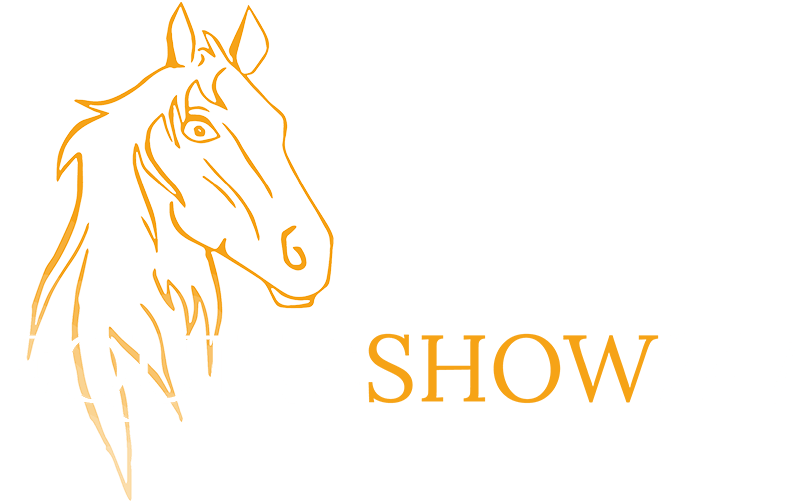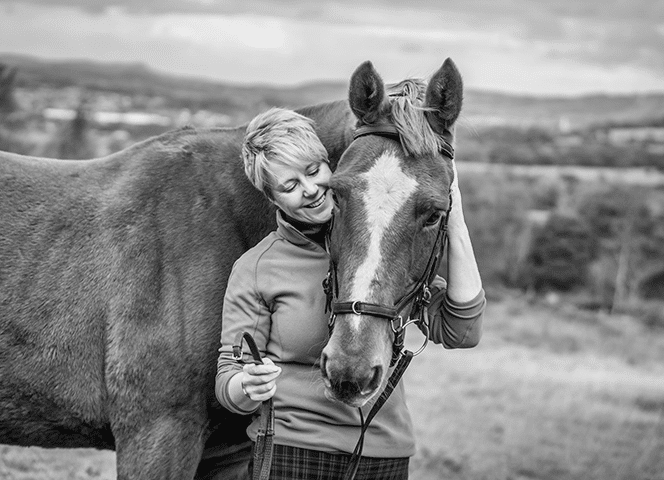Although many riders know the benefits of visualising, they ignore this incredibly powerful means of changing your riding – both physically and mentally. This is such a shame, visualising is not only a free mindset tool, it’s a direct line to your mind on how you want to move, think and focus whilst in the saddle. It’s not only for those competing at the higher levels, you can also use visualisation for groundwork, hacking or schooling in any discipline and it takes next to no time to do. It really is a game-changer and so underused – use it as your secret weapon!
First of all, let’s talk about what visualisation is and how to do it and then let’s troubleshoot.
Visualisation, sometimes called mental rehearsal or mental imagery comes from imagining how you’d like to be with your horse. It acts as a set of instructions to your unconscious (i.e., subconscious) mind, the part of the mind that controls up to 97% of our actions, behaviours and habits. When you choose to use this part of your mind, you’re giving yourself a huge leg-up in terms of having your mind replicate what you are actively showing it. Compare that to using only your logical mind to ride – about 3% of our thinking – and you can see how much more powered up your thought processes could be.
Although you might associate visualising with the mental preparation side of riding, it also helps in the physical sense too. This means that if you’re having trouble with a particular aid or you need to keep your hands stiller, you can use visualisation to improve on those things too.
Here are two options for mentally rehearsing. Option 1 is when you don’t believe you can make the change, it’s a deeper process and Option 2 is for a quicker visualisation, when you have the belief and are wanting to hone your skills.
Option 1 – removing anxiety and lack of self-belief
- Sitting with legs uncrossed, feet on the floor, begin to gaze at a spot. Blink normally and breathe. Allow the breathing to slow and deepen naturally. Allow thoughts to enter and leave without paying any attention to them. (About 3 minutes)
- Close your eyes
- Imagine you are in a place that makes you happy – the beach, a field, a forest etc., and take a moment to relax into the scene, be in that place, rather than watching yourself. Immerse yourself. Take in everything you can see, touch and hear. Stay there for a few minutes, until your breathing slows and you feel calmer.
- Very slowly, count from 10 to 1, taking about 2 minutes to do so, whilst being in your happy place. 10…….calmer 9…….. calmer 8……… calmer 7…….. calmer 6………. calmer 5………………. calmer 4………………………… calmer 3……………………………….. calmer 2……………………………………………………. calmer 1……………….
- I imagine now exhaling out all the anxiety and lack of self-belief that stops you from being the rider you know you can be. Feel the tension in your head and muscles being carried away in each exhalation. Continue to do this for about 2 minutes
- Now that you have released my anxiety, imagine your ride – see Option 2
- Go back to steps 4 , 5 and 6 and repeat about 3-5 times
- Say to yourself – “I can do this,” or other mantra and as you say it, feel determined and motivated and exhale to really feel those emotions. Repeat about 5 or 6 times.
You can record these guidelines as a voice memo and play them back to yourself.
Option 2 – visualisation alone
- Imagine, in real-time (i.e., not slow motion) your ride. You may want to visualise from the collecting ring or start by mounting or concentrating solely on a specific portion of your ride.
- As you imagine, you need to use at least 3 of your 5 senses.
- What do you see, where are your eyes, are they looking ahead?
- What are you saying to yourself (if you started with Option 1, you can hear yourself say your mantra)? It may be that you hear your instructor or trainer giving you directions, or it may be your own voice telling you what to do
- What are you feeling? What feedback is the horse giving you from your aids? What pressure are you using with your leg, seat and hand aids?
- Aim to feel as if in the zone. Allow thoughts to enter your head and drift away without giving them any attention. Like a train entering a station and leaving again.
- Remember to always imagine riding and not watching yourself. As you ride, think about exactly how you want to do each turn and each movement in the finest detail thinking about your speed, impulsion, direction, the line you’re taking, the control, your aids and your posture.
- Repeat your visualisation often, so that it embeds in your mind and body, you may find yourself ‘riding’ – moving your body, hands and legs as you visualise and that’s great! Visualise until it becomes second nature to run it through your mind.
- Repeat your visualisation at least once just before you do your ride, more often if you can.
Troubleshooting
- I can’t visualise. Either you’re mistaking visualisation for photographic-quality pictures – which are absolutely not necessary, because your dim visuals will work and become clearer and better quality as you practise, or you aren’t used to visualising. In which case, use what visuals you can muster and add in the feel of the ride and/or more self-talk. Remember visualising is a mental rehearsal, so the visuals are only one aspect.
- When I visualise, I look at my legs or hands. When we start to visualise, this is quite common, as we focus on a single action in our riding. Bring your attention to looking up and ahead and feeling what it feels like to use your legs or hands.
- I prefer to do the visualisation in slow-motion. If this enables you to break down a movement into smaller chunks, that’s good. However, once you have the sequence in your head, increase to normal speed, as this gives your mind an idea of how quickly it needs to react and respond to your horse and your ride.
Use visualisation as a preparation, but also more on the hoof too. A quick visualisation of what you want to have happen can boost confidence and results!
This post was written by Tracey Cole, Mindset Therapy & Coaching. You can also read the blog on EquineShow247





